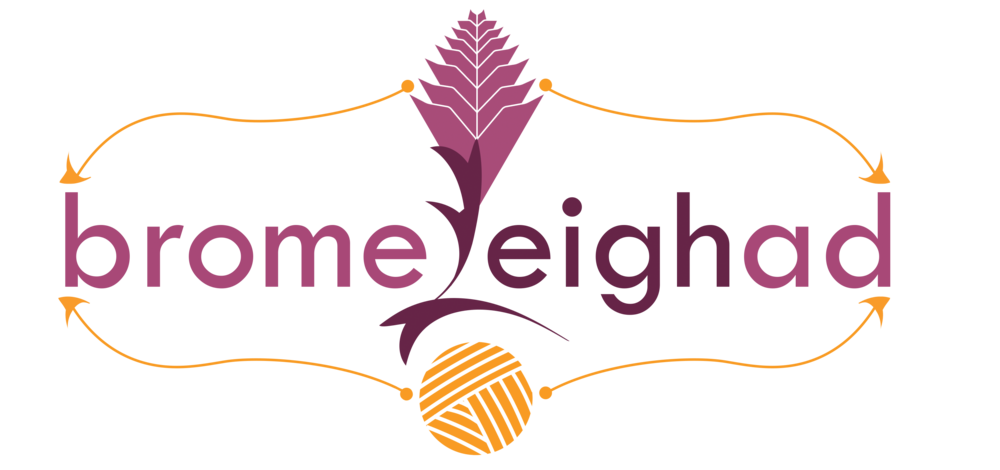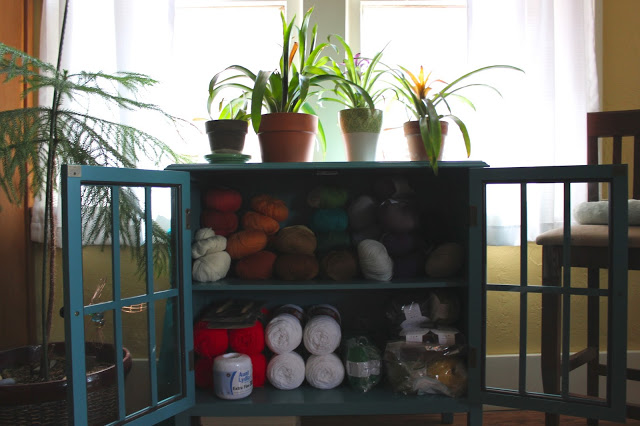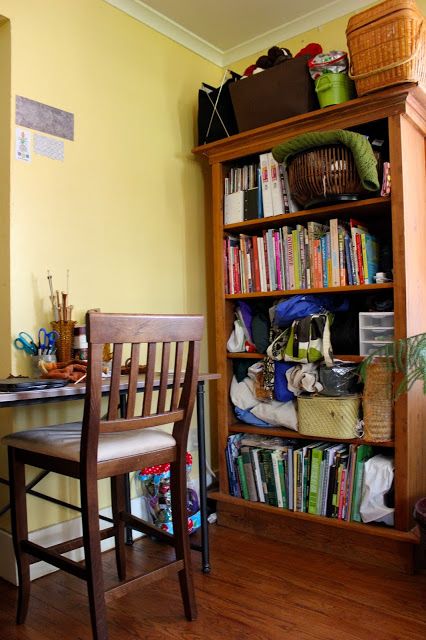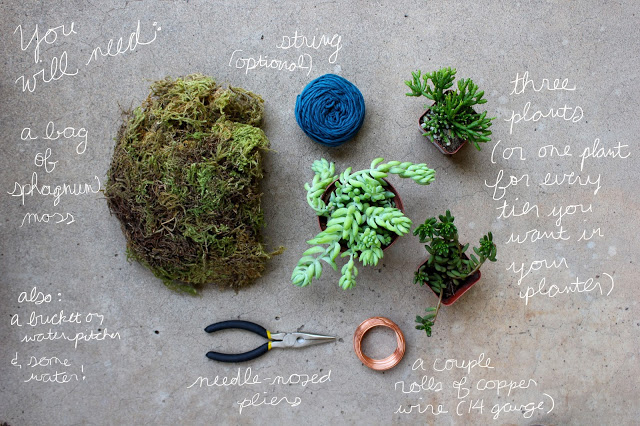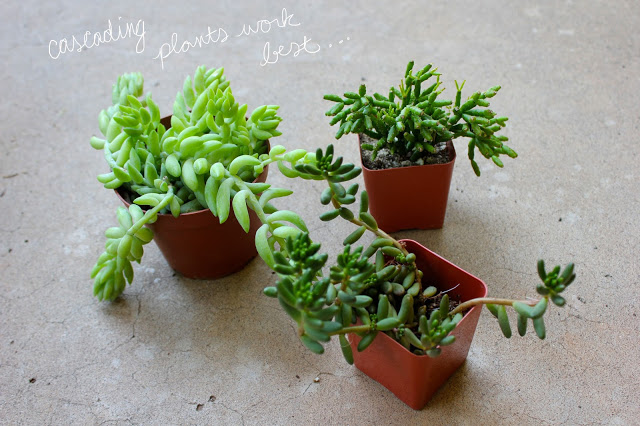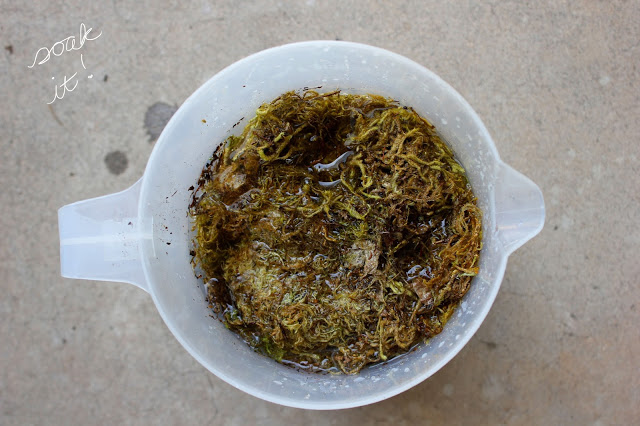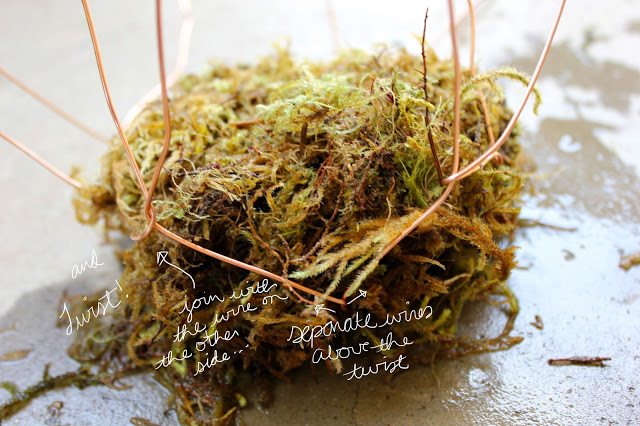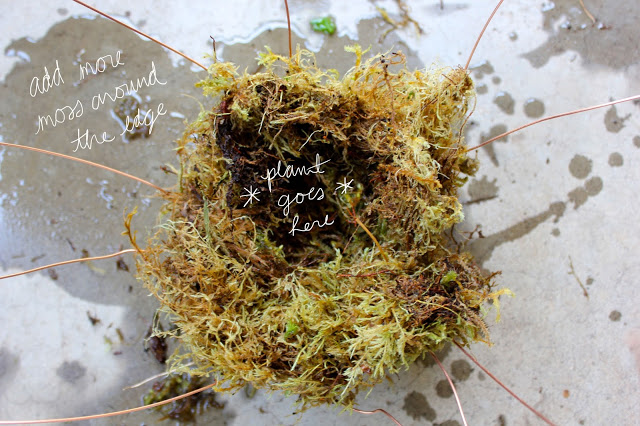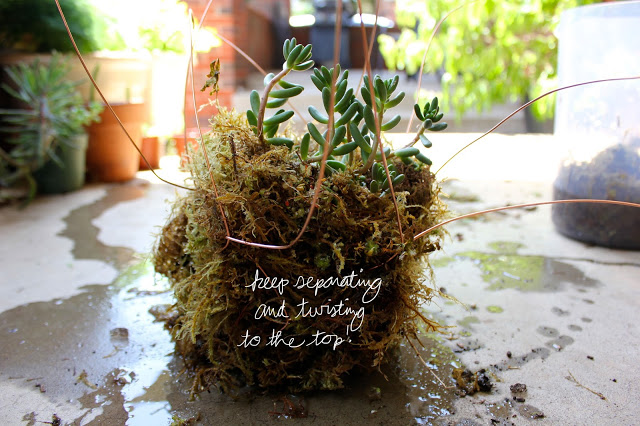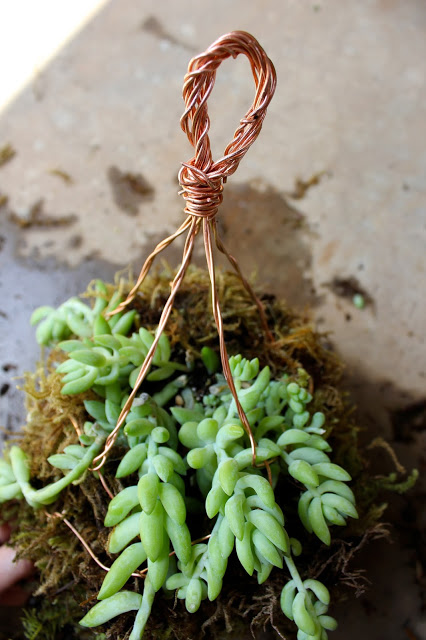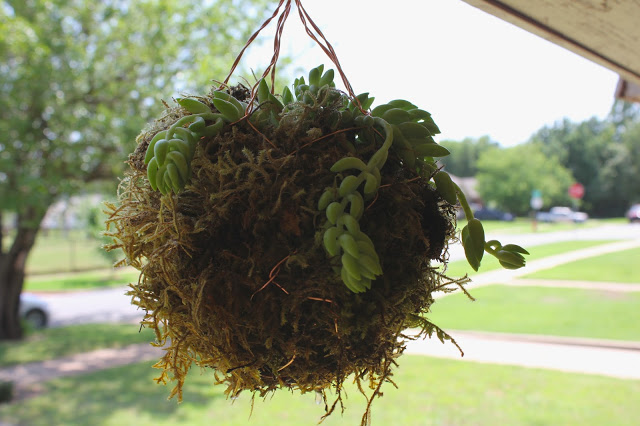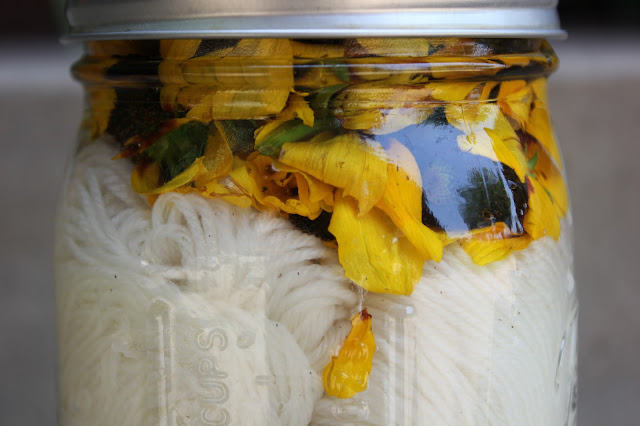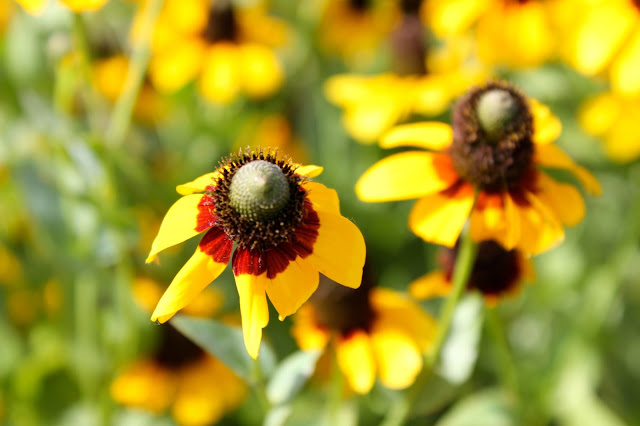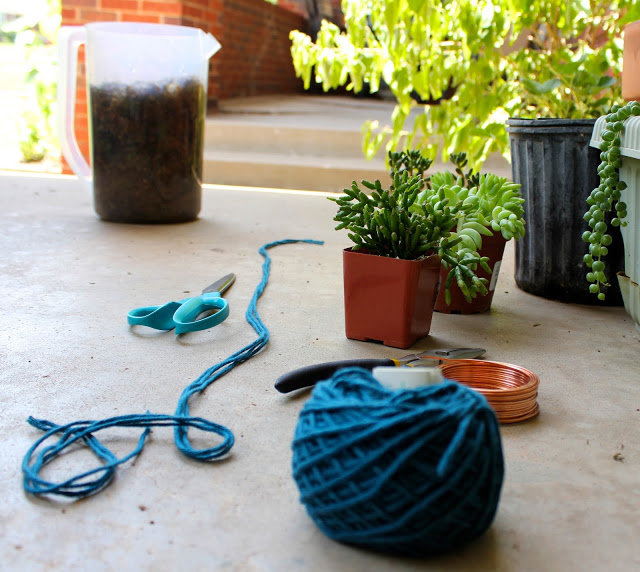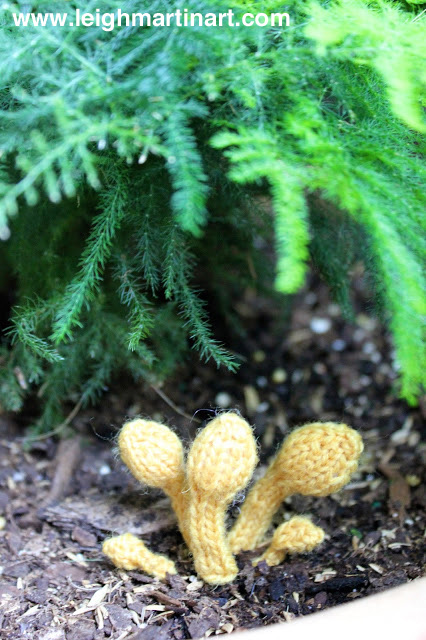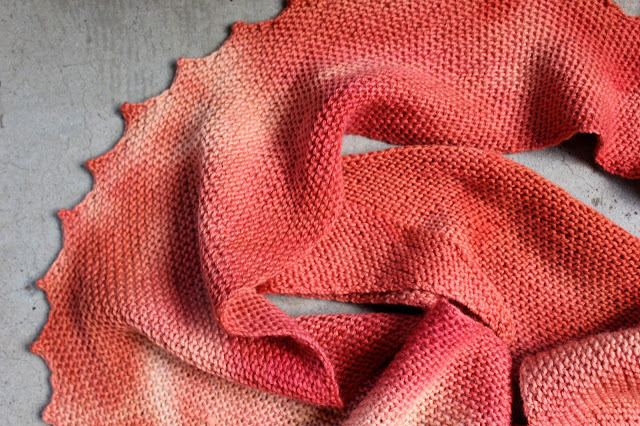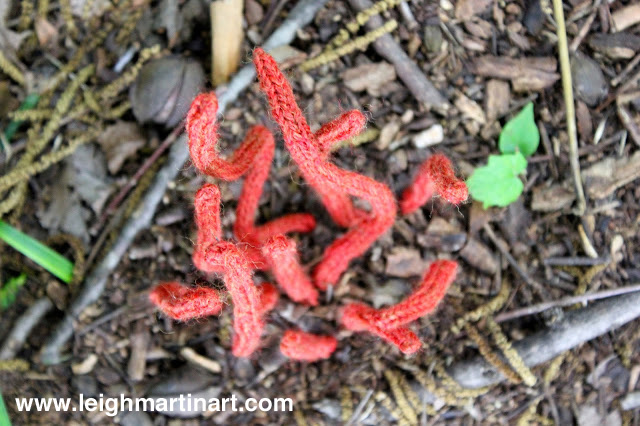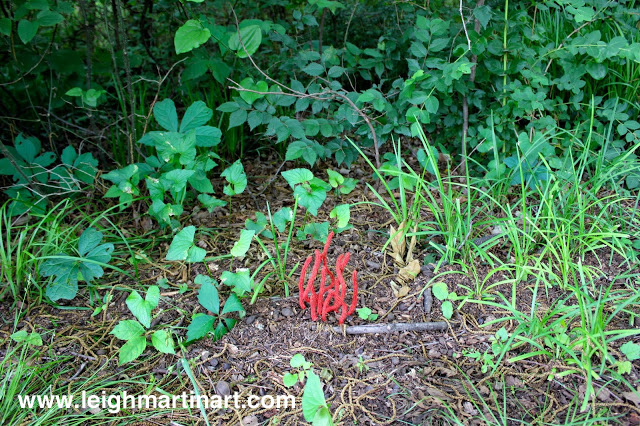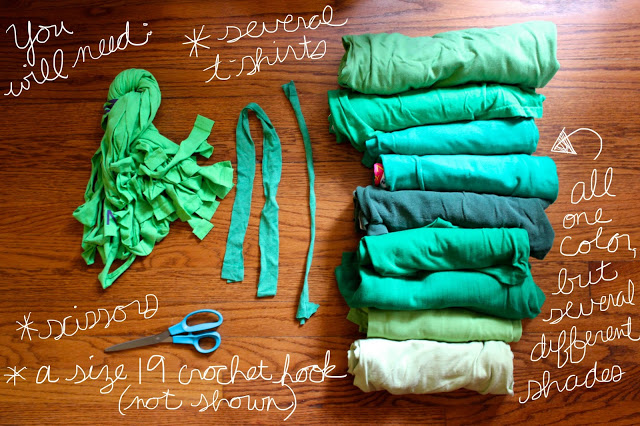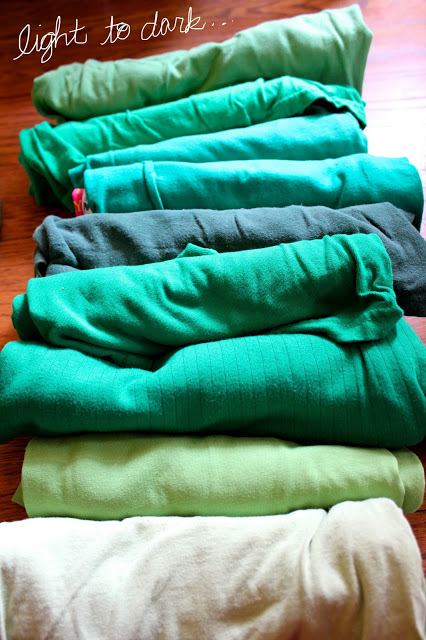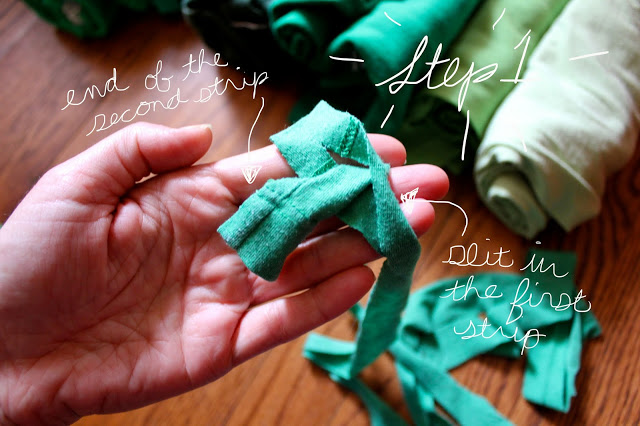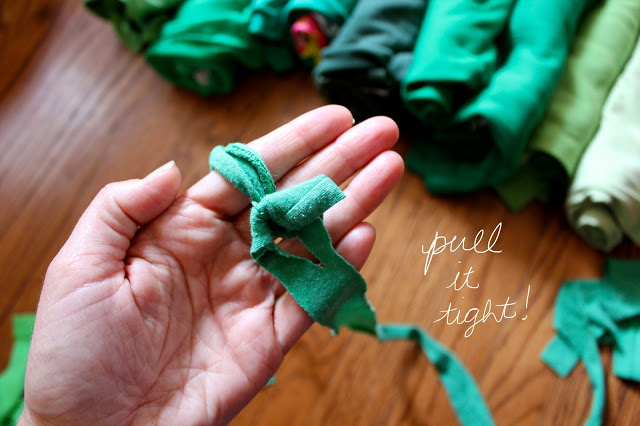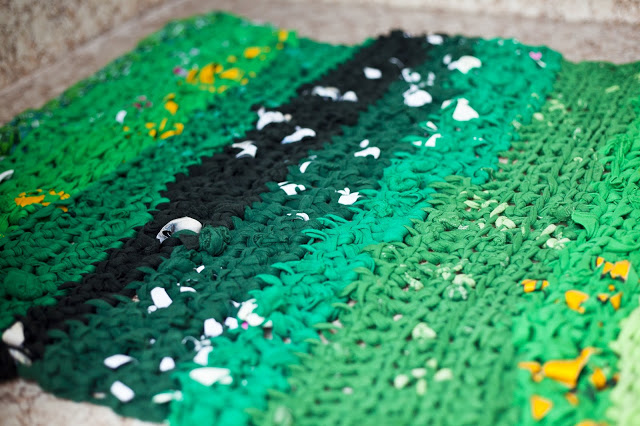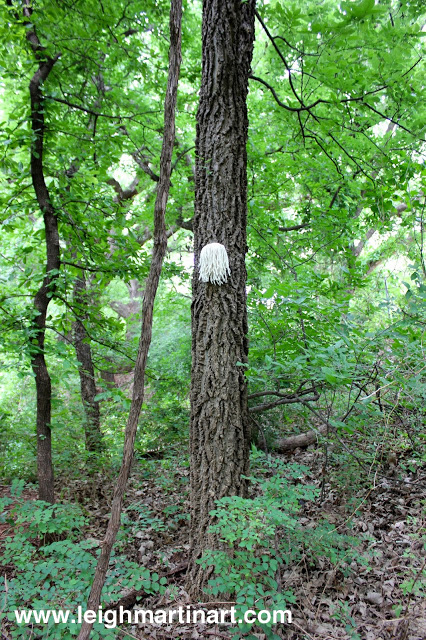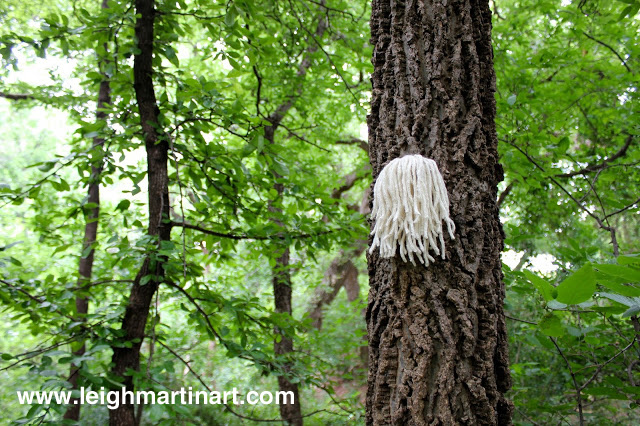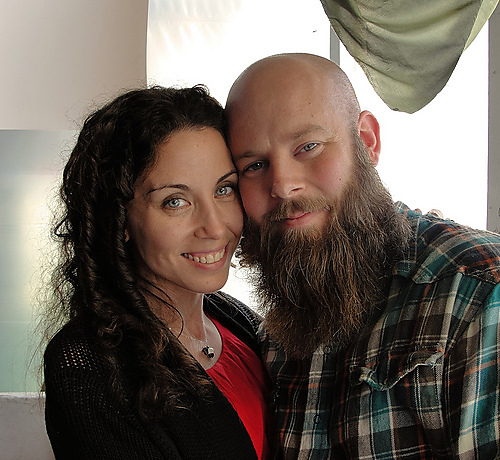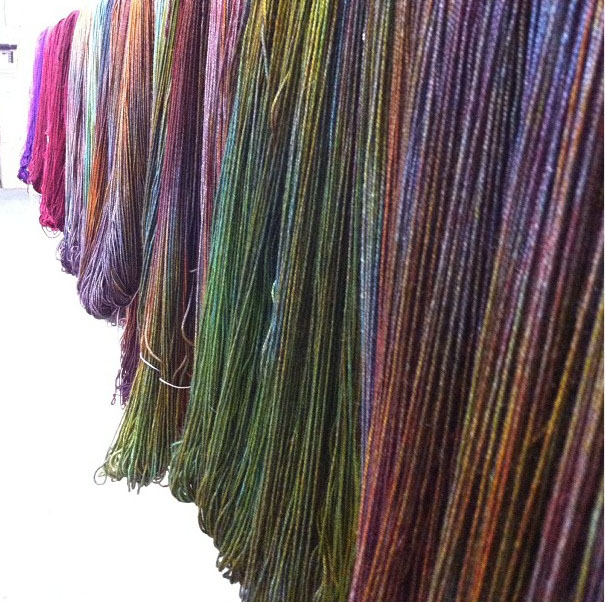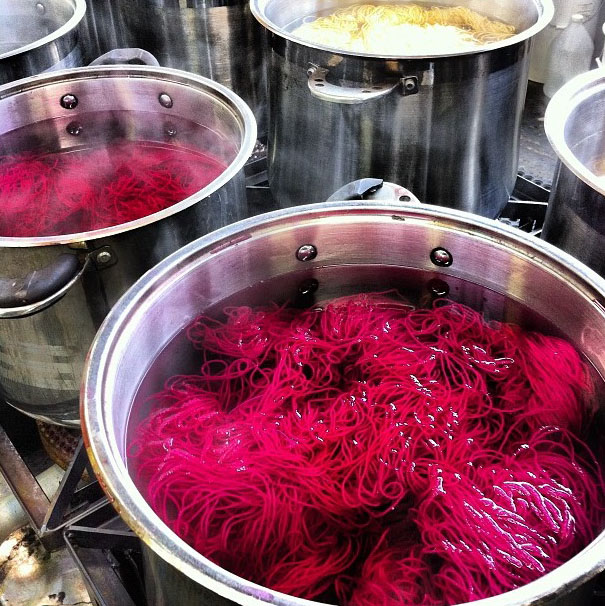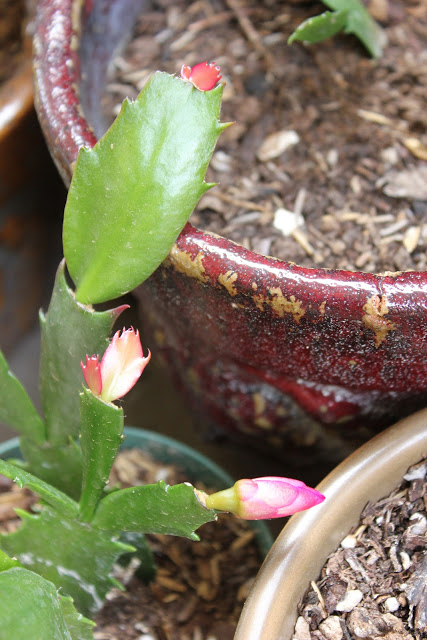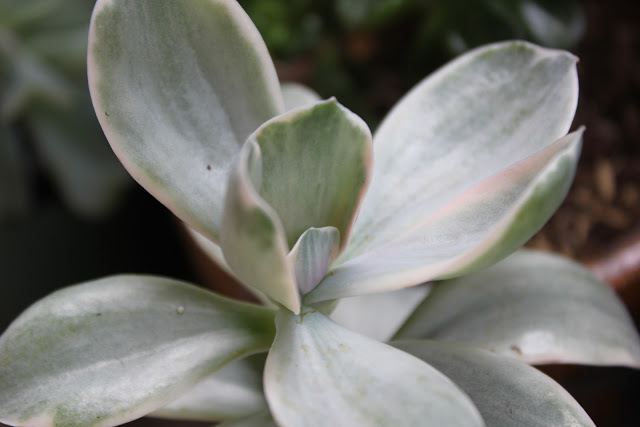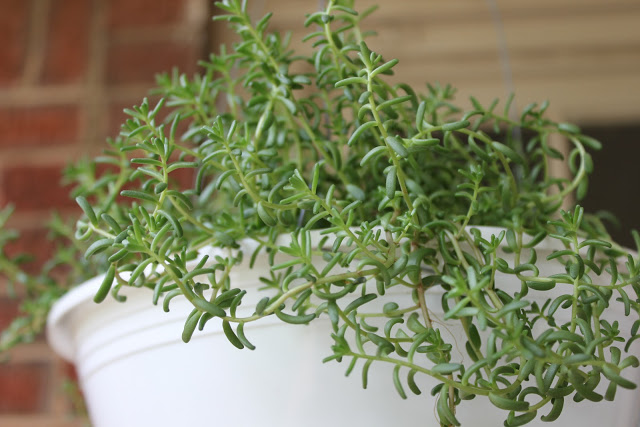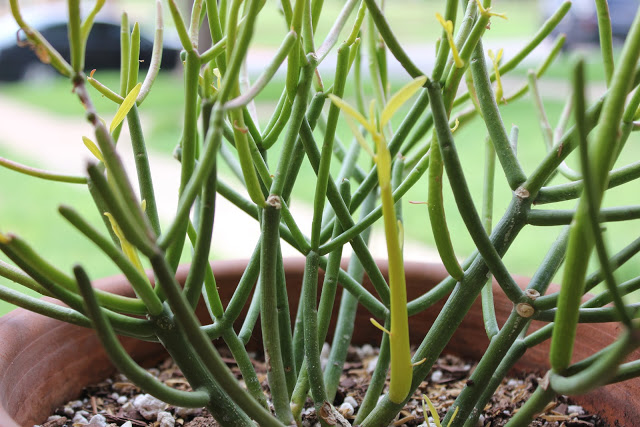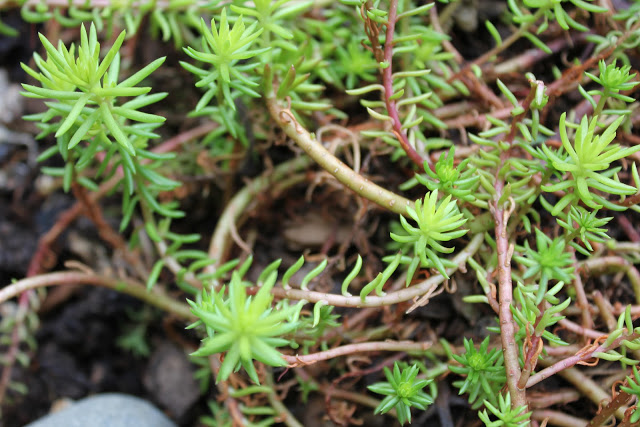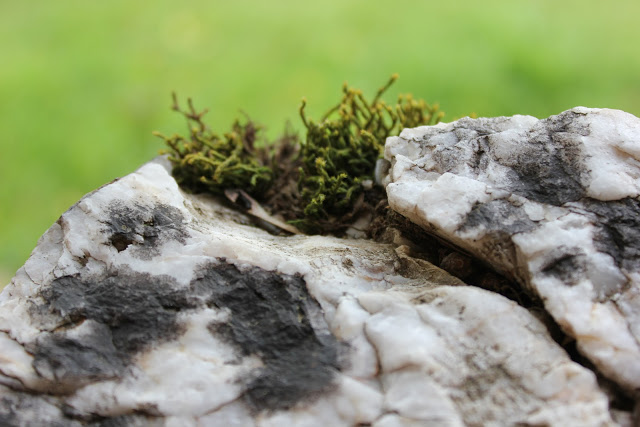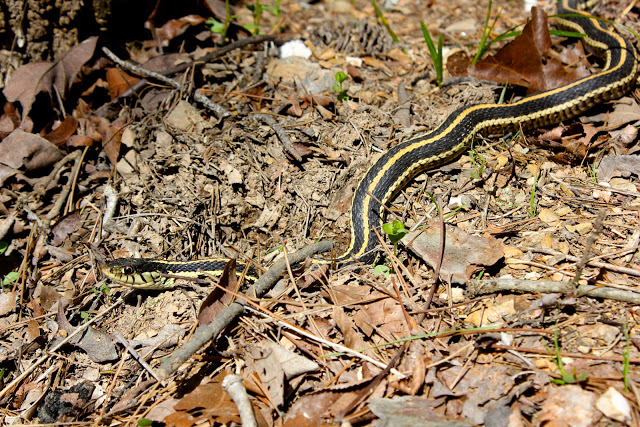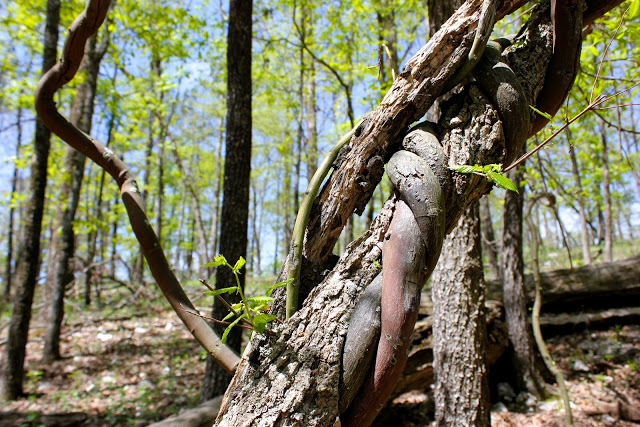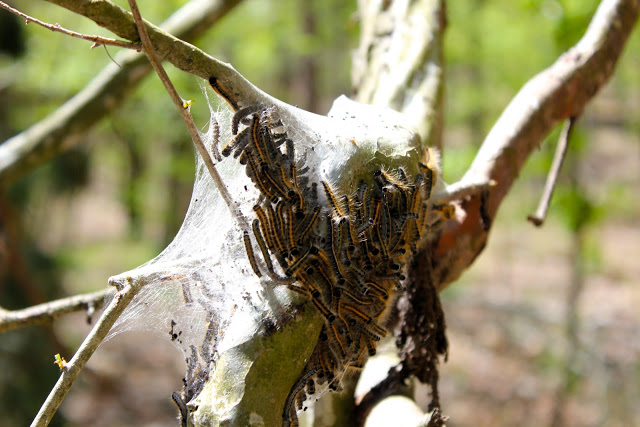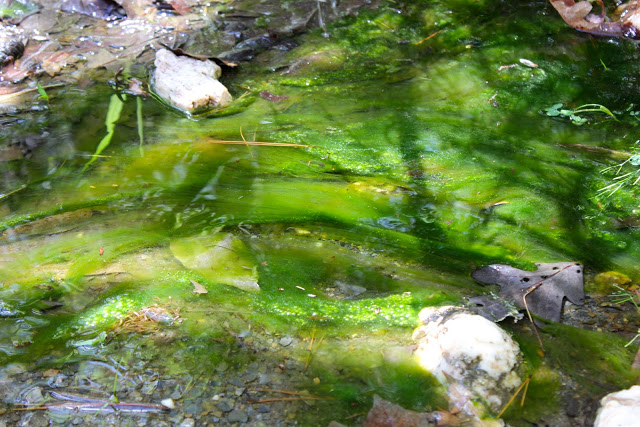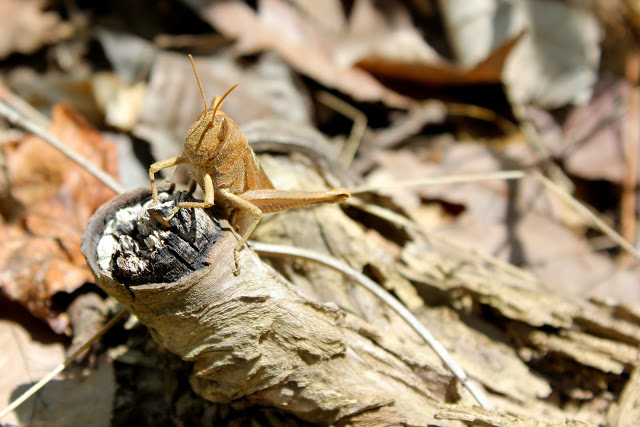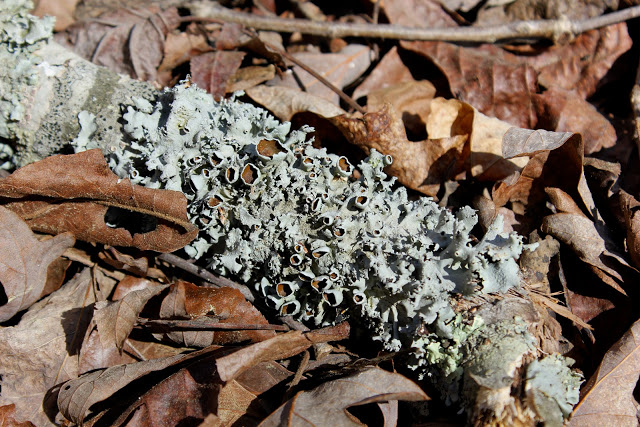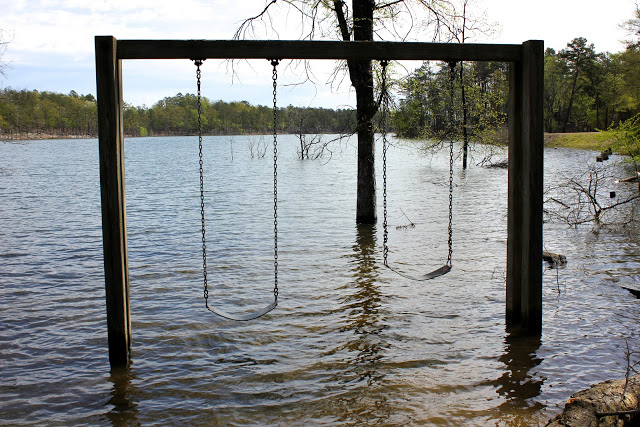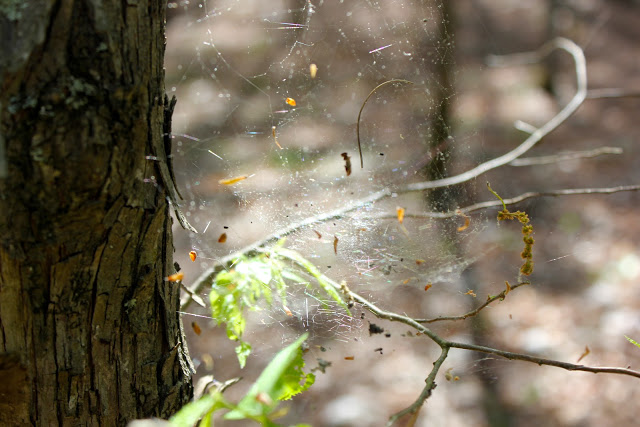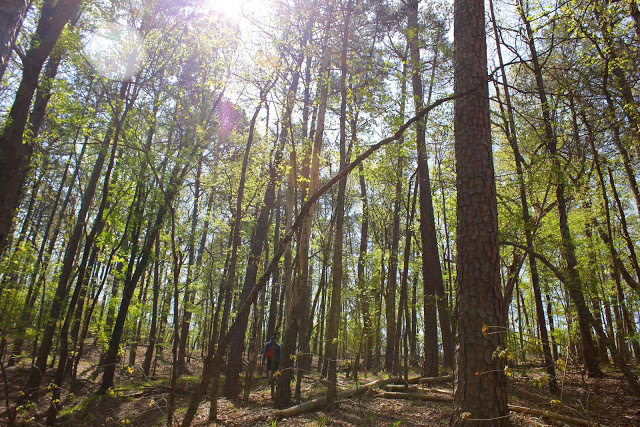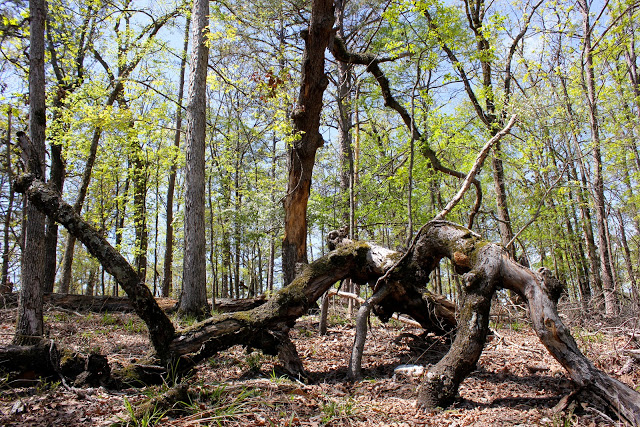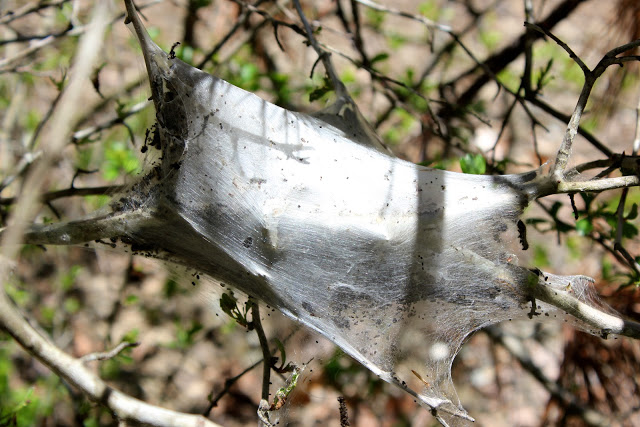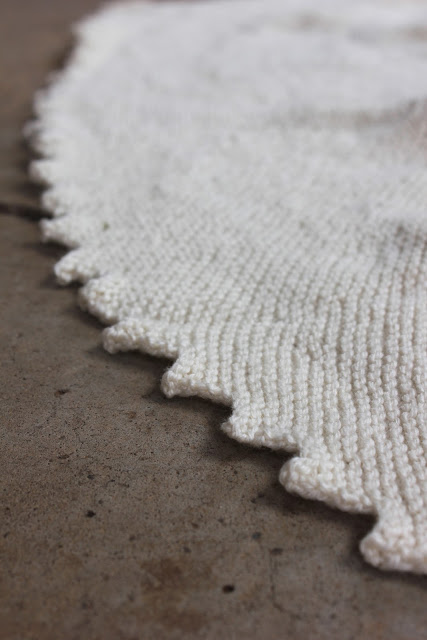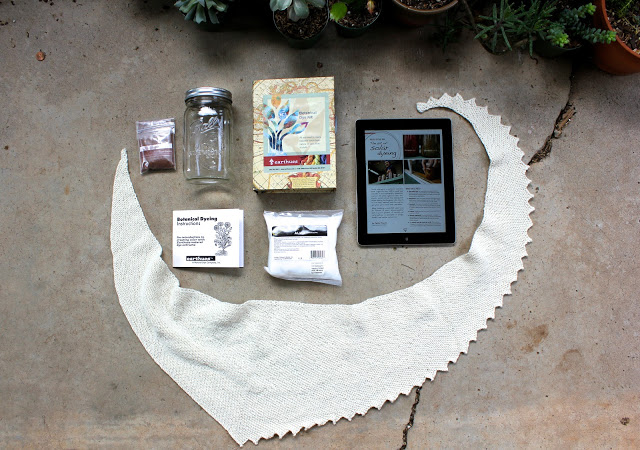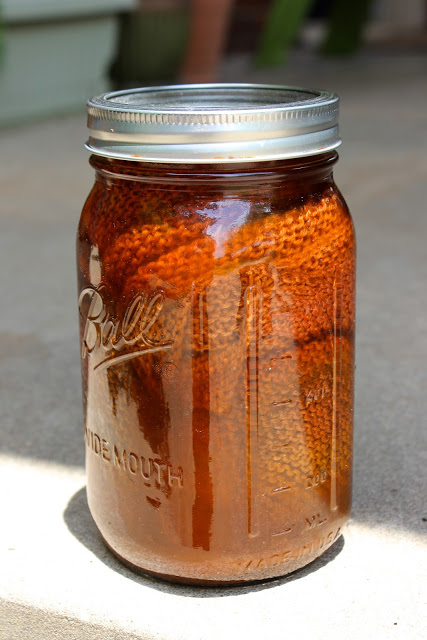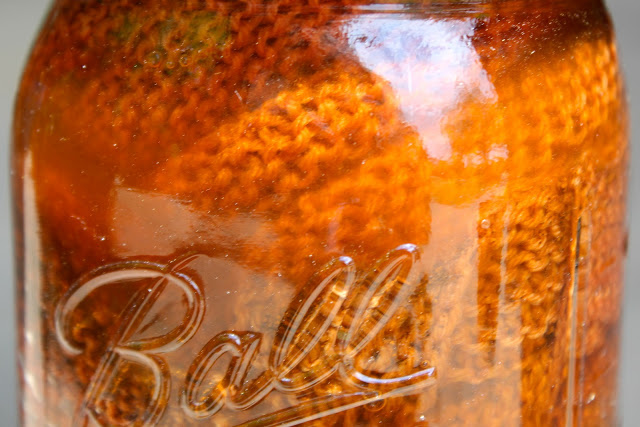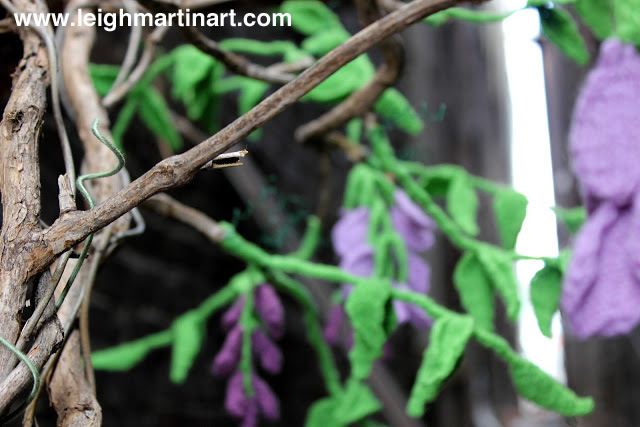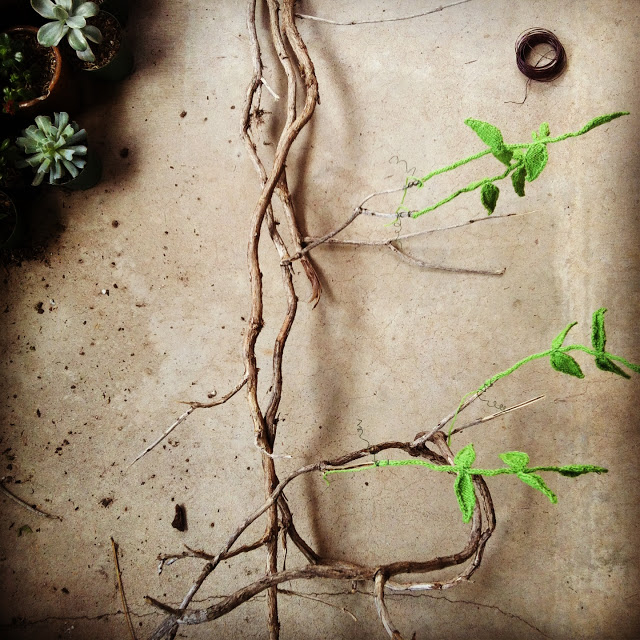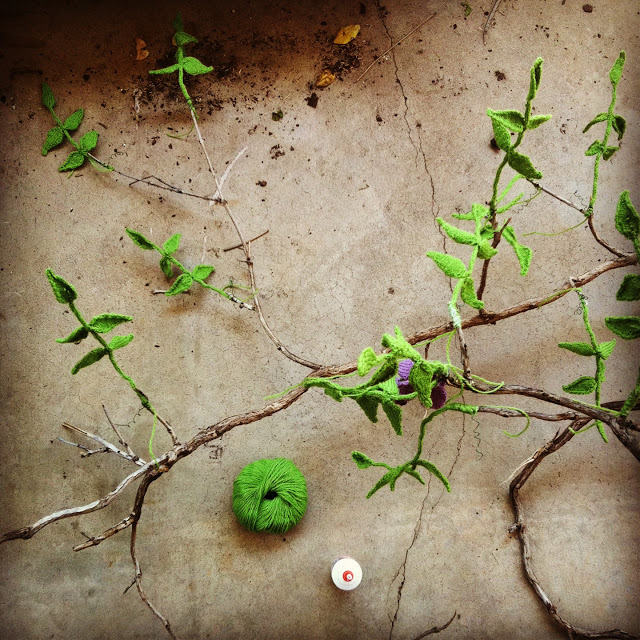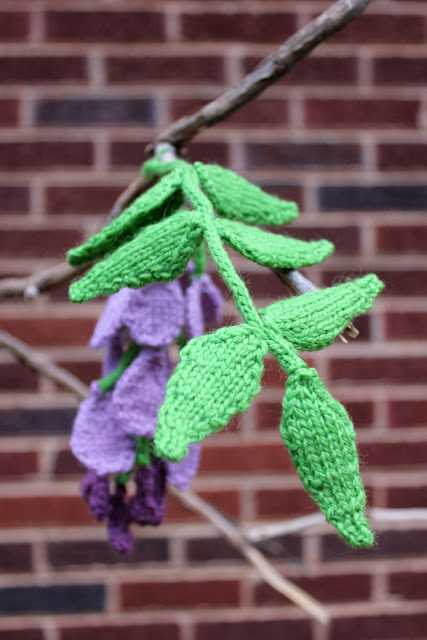Today the "weekend workspace" phrase is more fitting than it's ever been, because I've been building a home workspace! Up until now I've had a bookshelf and have worked at our dining table or the couch... but last weekend we pretty much rearranged the entire house so half of the front room could be a dedicated space for me to work in. My bookshelf has pretty much remained the same, but I have added another cabinet for yarn storage, and a desk (!!) where my yarn swift can remain set up at all times and I can sit and work on project/pattern development. I also have the small beginnings of an inspiration wall. Now, off to put it to use!
Tutorial || Tiered Moss/Copper Hanging Planter
Materials needed:
A bag of sphagnum moss Needle-nosed pliers Approx. 50 feet of 14 gauge copper wire Three plants (cascading types that can handle drying out will work best) A bucket for soaking the moss, filled halfway with water Yarn/twine is optional if you would like to tie up the moss ball while you wrap your wire.
1. Begin by cutting the copper wire into lengths of about 36 inches. You will need five pieces of wire for each tier of the planter. Meanwhile, soak the moss in a bucket.
2. Take five pieces of cut wire in a bundle and find the center of the length of wires. Using the pliers, twist the wires around each other to form the center of the bottom of your planter. Spread the wires apart in a circular/sunburst fashion. You now have ten wires around the circumference of the center twist.
Solar Dyeing || #2
Weekend Workspace || 6-22-13
Since the bulk of what I do related to artwork and this blog occurs on the weekend, I thought it might be nice to share some snippets of what I'm working on since sometimes I don't get to show the finished product for a while afterward. Here are some of the scenes I've surrounded myself with so far today.
52 Forms of Fungi || #15
Solar Dyeing Results
52 Forms of Fungi || #14
52 Forms of Fungi || #13
Tutorial || Ombre Jersey Rug
All you need for this DIY is a minimal knowledge of crochet stitches, a pair of scissors, a giant crochet hook (I used size 19, the largest I could find at the time) and a ton of t-shirts. Buy all the same color (such as green, or red) and then get as many different shades as you can - light, dark, dull, bright, just as many shades as you can find of the particular color you are going to use. Larger t-shirts are better, since you get more material out of them also. Once you get all of your t-shirts, I would recommend stacking them or laying them side by side in the order that they will be used. Line them up from light to dark, to light to dark, etc. Since some of the shirts will be similar shades you can fade in and out a couple of times and probably get to use all of them. As far as where to purchase your shirts, I got all of mine at Goodwill. It's true that this can get expensive quickly, but if you're making a humungous rug is it going to cost more than you would pay to buy one? Probably not.
When you get to the end of your second row, turn and stitch back down the row again as established. You will keep doing this until the rug reaches your desired length. It's fun to watch the fade in color unfold! Here's what it will look like when you're done...
52 Forms of Fungi || #12
Fiber Is... || #2
I found Sarah Eyre within the last couple of years on Instagram, when it was still possible to search a general hashtag (i.e. #knitting) and view photos that were posted more than an hour or two ago. I was intrigued by this beautiful, courageous lady, partly because she just happens to have my dream job.... she co-owns a yarn company called Cephalopod Yarns! Based out of Baltimore, her IG feed often includes skeins of lusciously hued yarns in dye pots or drying racks, fun mirror art in the studio, and images and words that just remind you to remain present. I'm hoping to splurge on some of her yarn later this summer---there's some camel fiber that I'm dying to make a shawl out of. It's supposedly incredibly soft! Here's what fiber means to Sarah Eyre..
About Sarah
Oh no, the dreaded introductory paragraph! I’m so awkward at this part. I’m your average cat- herding thirty-something fiber artist, living in Baltimore with my husband and daughter. I cook pretty well and play banjo very, very badly. I take endless photographs of absolutely everything. I love comic books, Victorian literature, yoga and running, and I believe every single one of us is a superhero. I teach yoga and meditation when I’m not on the road, with a focus on working with the disabled. I believe in the power of small and simple things.
Ways Sarah works with fiber, including her favorite craft:
I’m a dyer, spinner, knitter, felter, knitwear designer, embroiderer and shamefully awful crocheter. Improving my crochet skills is on my list of goals for 2013; there are just too many amazing crochet projects and patterns! In truth, I’d say I’m primarily a spinner and dyer; while I do knit, and love to knit, my primary passions are color and form.
And now for the big open-ended question. To Sarah, fiber is...
Fiber is grounding and uplifting: it reminds me slow down and to pay attention to the small things, like stitches or plying, but it also brings people together into common efforts, like Afghans for Afghans, where fiber artists work to create warm handmade items for people they’ve never met. My life is infinitely warmer, happier, and, well, fuzzier with fiber in it. :)
Sarah (shown below with her husband, who she works with!) blogs at On My Tiptoes and you can shop for (and lust after) some of the beautiful yarns her company creates at Cephalopod Yarns. Thanks, Sarah!
Lately
The Last of Broken Bow
Solar Dyeing + Off the Needles || Hitch Hiker Shawl
Trying Something New...
I'm learning a new skill today, and I must say that it is thoroughly addictive. Can't wait to share more about this next week...
Above is my (finally) completed hitchhiker shawl, the guinea pig for this experiment...
52 Forms of Fungi || #11
This structure was knitted as part of my 52 Forms of Fungi project, through which I will knit a different type of fungi for every week of 2013. Check out more of the forms from this project
Dyed-in-the-Wool
Kansas City
This weekend was a great experience, and I can't wait to share some photos from my finished installation at Plug Projects. The Plug crew was incredibly hospitable and kind, and they were great to work with. I was blown away by the talent of the other artists in the exhibition, and feel honored to show alongside them. Not to mention, we had a lot of fun while we were hanging out - great people!
If you are in the Kansas City area over the next 6 weeks, I encourage you to stop by the Plug Projects gallery to see all of the artwork in Rare Earth. I will work on processing my installation images and post them on Wednesday.
Installation in Progress
